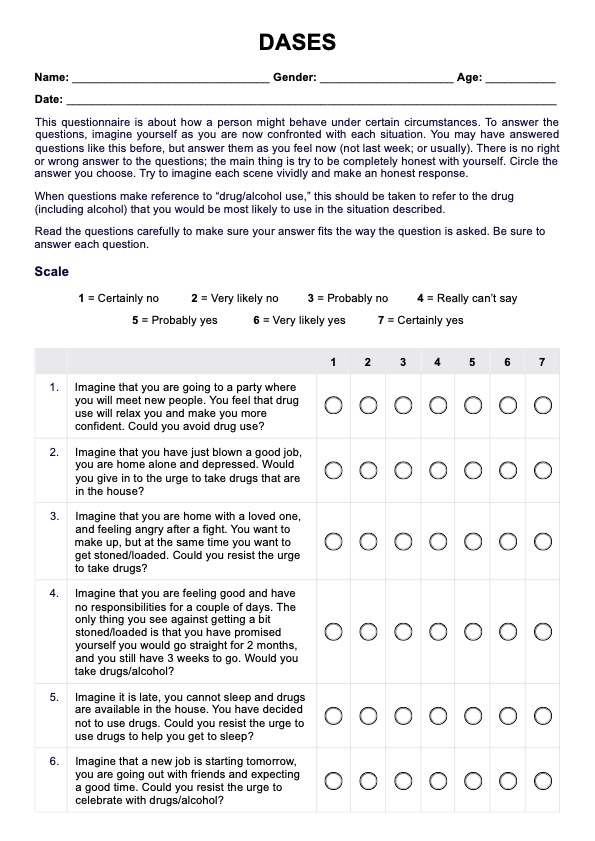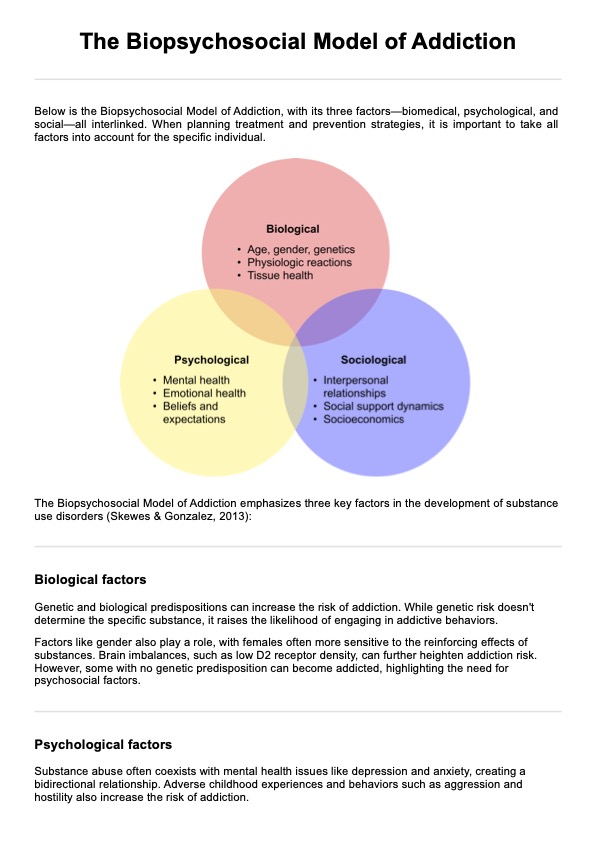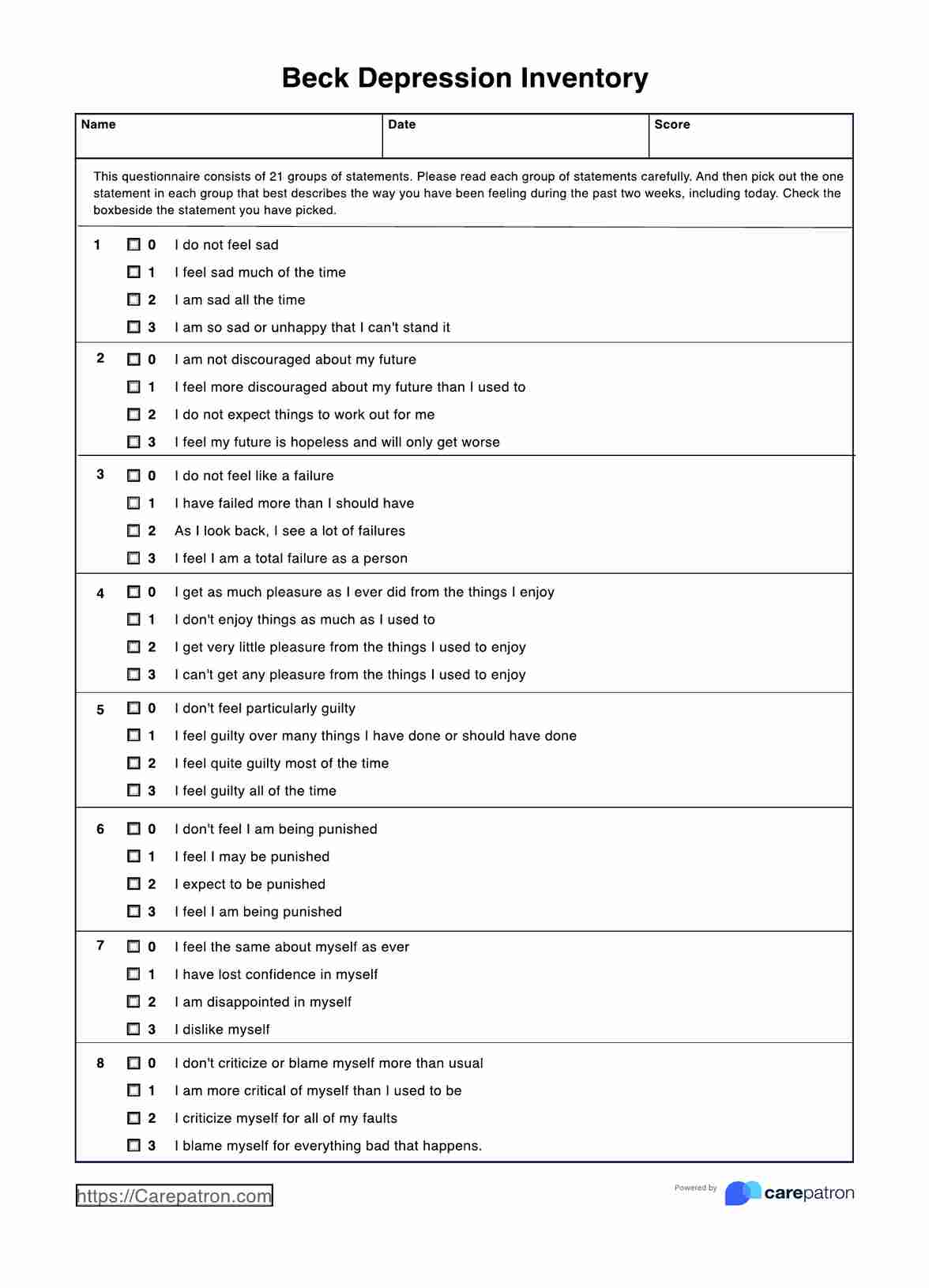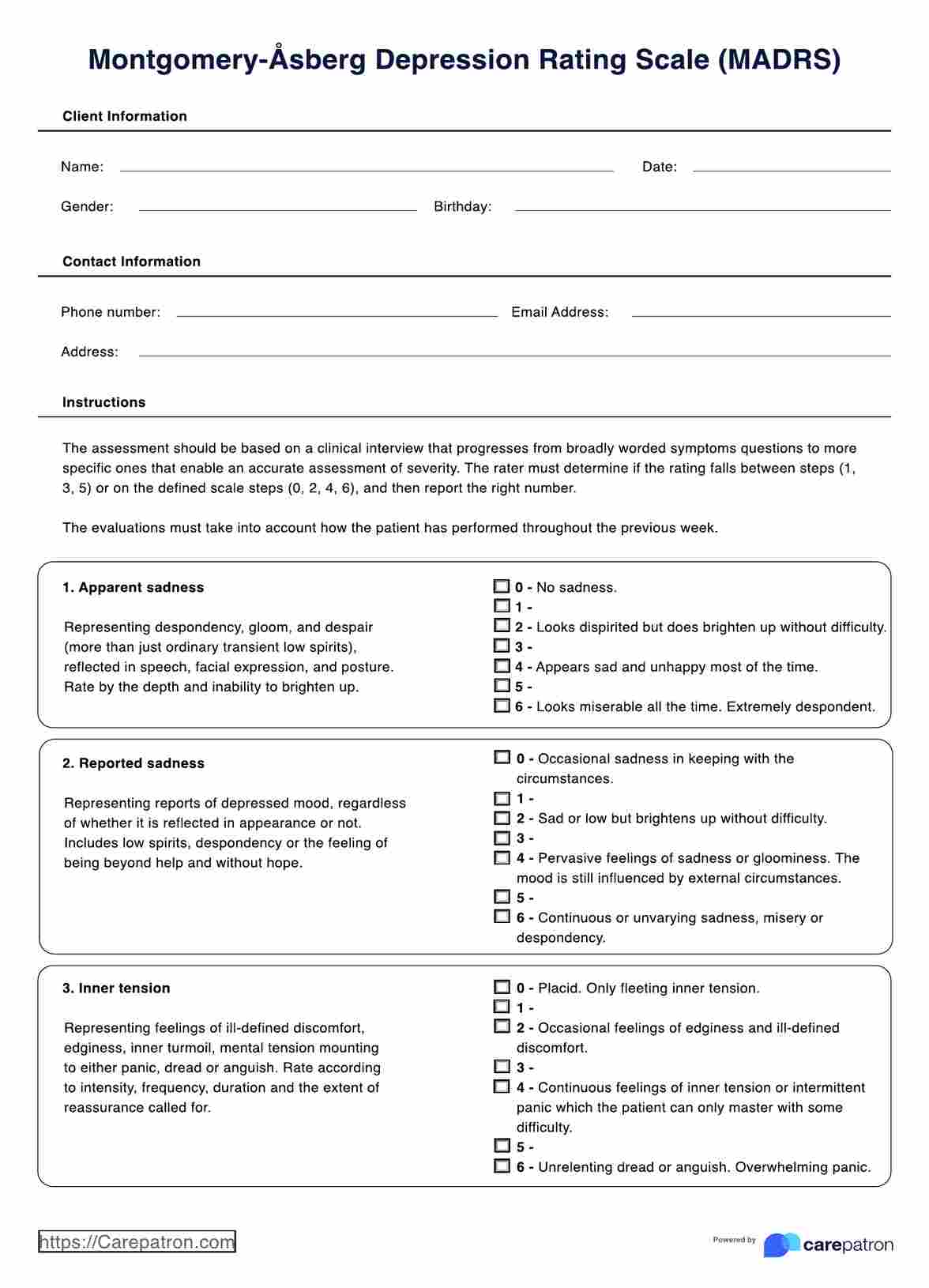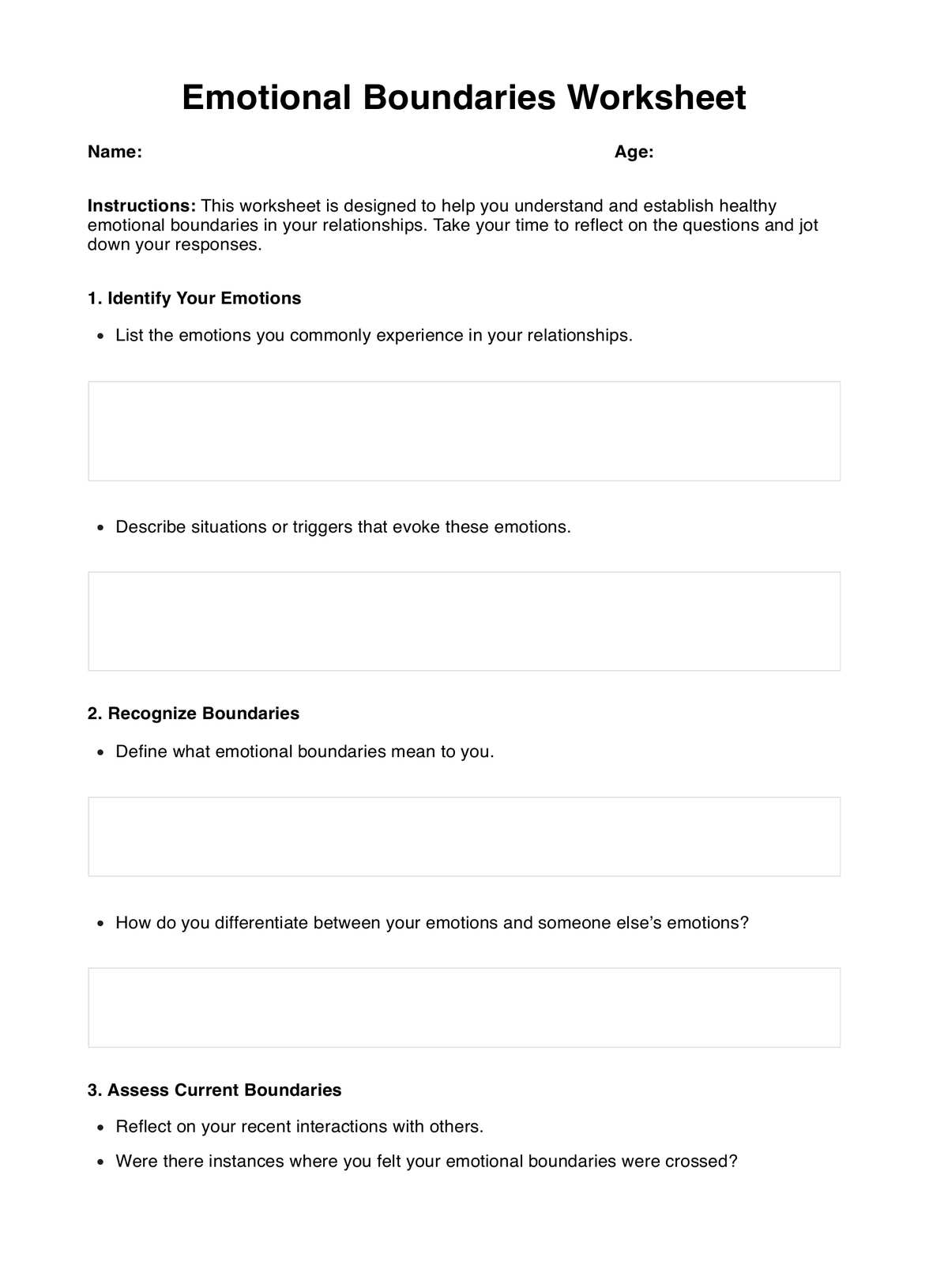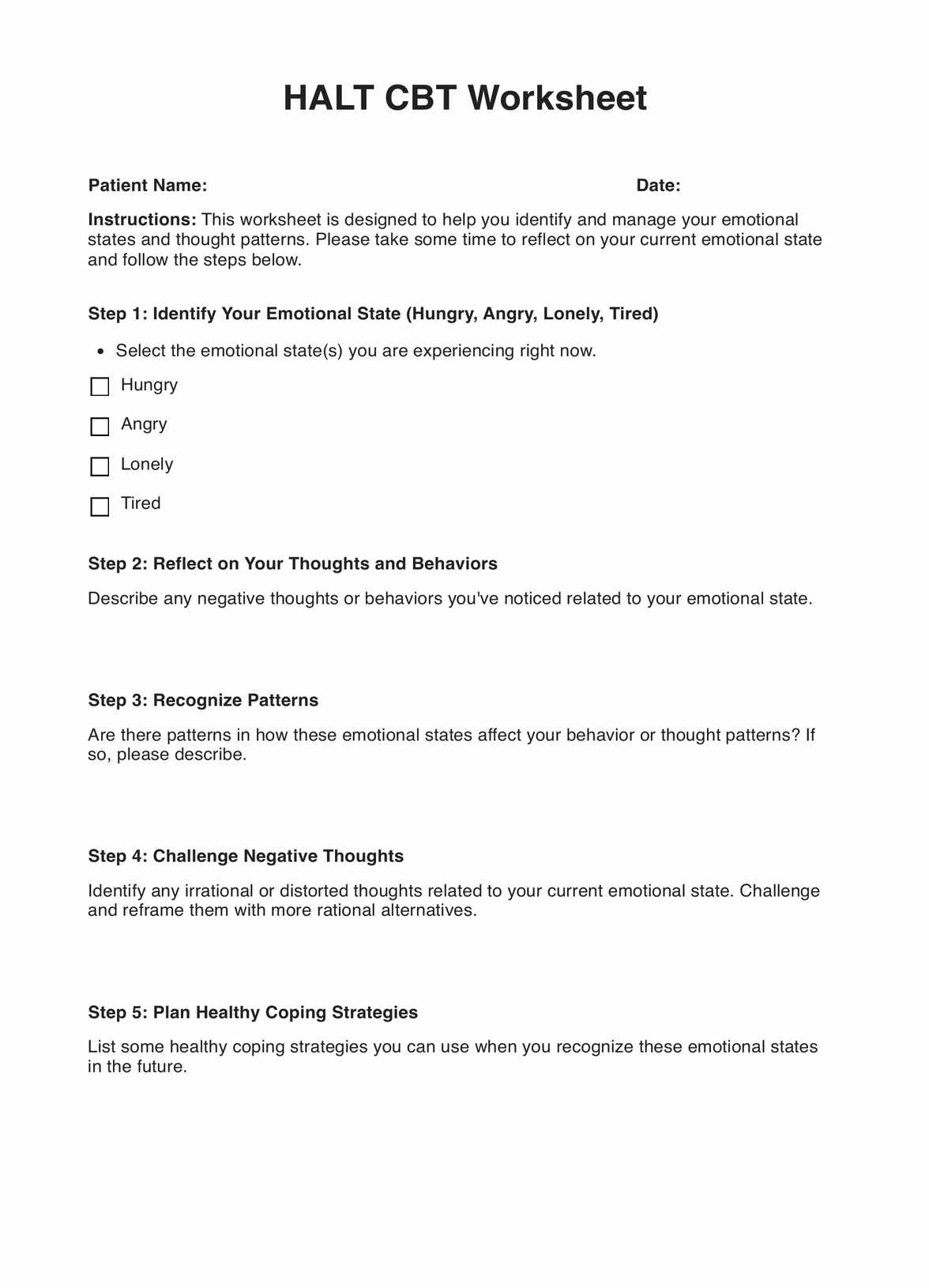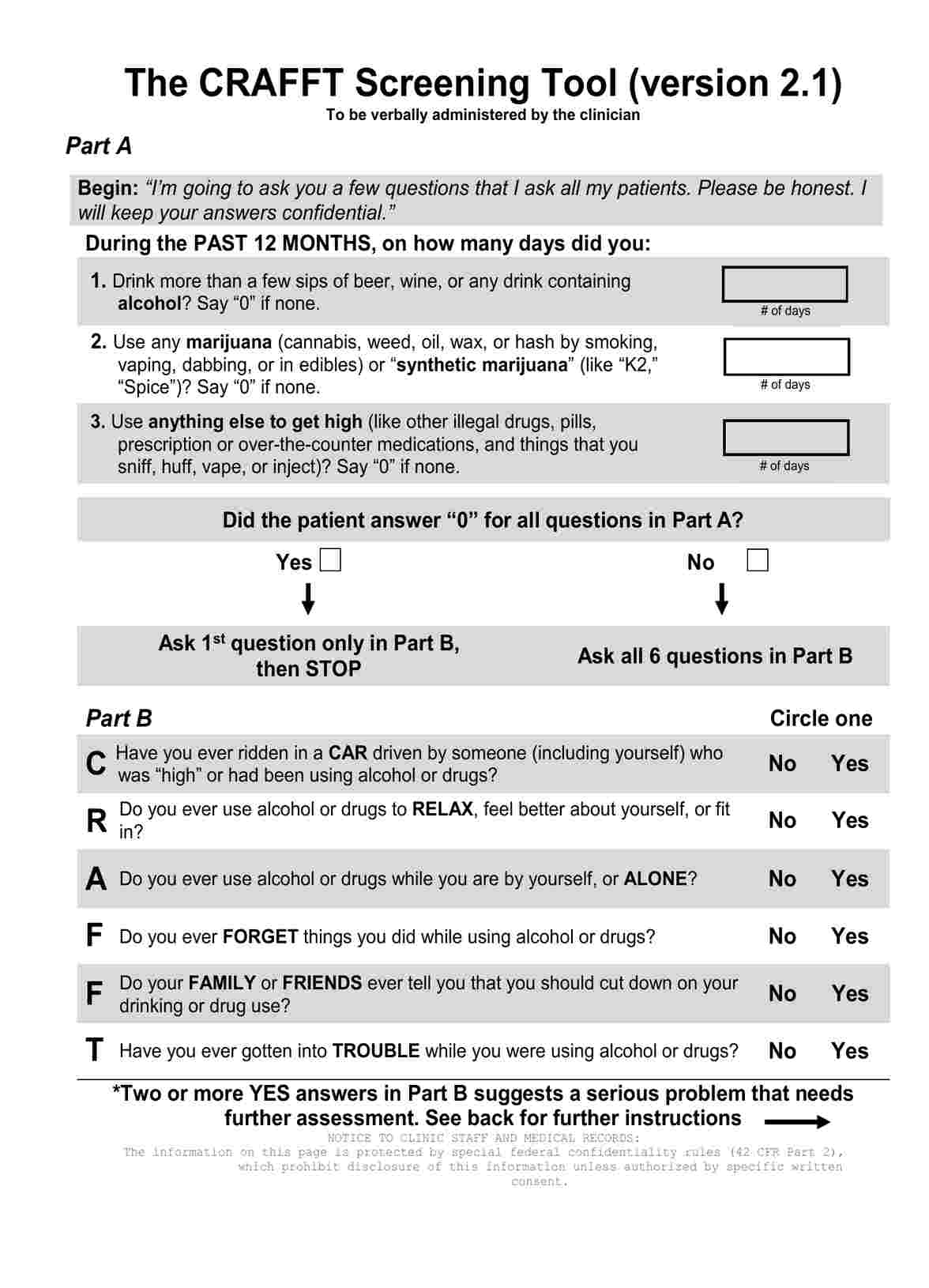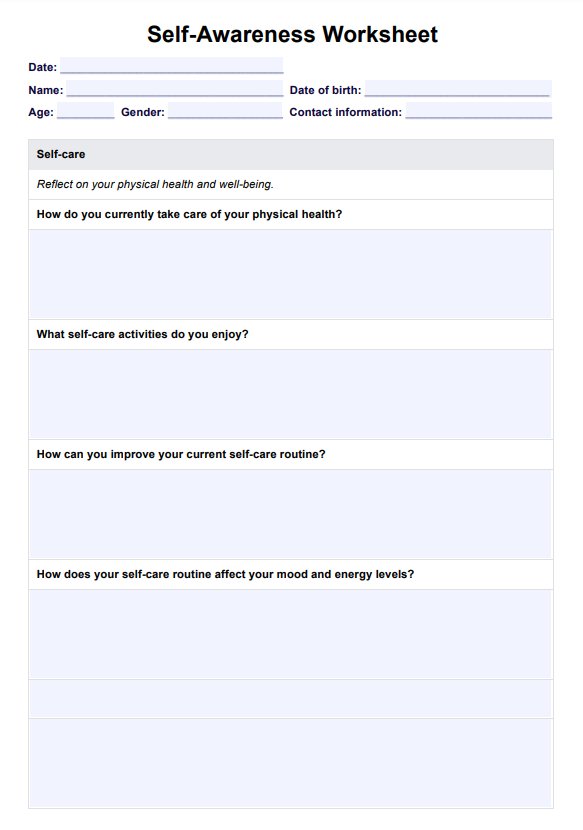Bipolar Treatment Guidelines
Explore expert Bipolar Treatment Guidelines, including diagnosis, symptom management, and personalized care strategies for improved health.


What is bipolar disorder?
Bipolar disorder is a mental health condition characterized by significant mood swings, including episodes of acute depression and manic symptoms or hypomania. These mood swings can affect a person's energy levels, behavior, thoughts, and ability to carry out daily tasks.
Bipolar disorders manifest through distinct mood episodes that oscillate between two extremes: the lows of depression and the highs of mania or hypomania. These episodes can impact an individual's emotional state, energy levels, behavior, and overall functioning ability. While the symptoms can vary widely among individuals, here are the more detailed descriptions of each type of episode experienced in bipolar disorder:
Depressive episodes
During acute bipolar depression episodes, an individual may experience a profound and persistent sense of sadness and despair. This mood shift is significantly different from the person's usual mood and can include:
- An overwhelming feeling of sadness, emptiness, or tearfulness.
- A profound sense of hopelessness, pessimism, or a feeling of worthlessness.
- A loss of interest or pleasure in most or all activities, including those once enjoyed.
- Significant changes in appetite and sleep patterns include overeating or lack of appetite, insomnia, or oversleeping.
- A noticeable decrease in energy or increased fatigue, even when not engaging in physical activities.
- Difficulty concentrating, remembering details, or making decisions.
- Thoughts of death, suicide, or suicide attempts.
Manic episodes
Manic episodes represent the other end of the full bipolar spectrum disorder, characterized by an abnormally elevated, expansive, or irritable mood lasting at least one week. They are severe enough to cause noticeable impairment in daily functioning. Symptoms include:
- A sustained period of feeling overly happy, “high,” euphoric, or unusually irritable.
- A significant increase in energy levels and activity, including a reduced need for sleep without feeling tired.
- Rapid speech, racing thoughts, and a tendency to be easily distracted.
- An inflated sense of self-esteem or grandiosity, believing one can do anything.
- Engaging in risky behaviors, such as reckless driving, excessive spending, or impulsive sexual encounters.
- Poor judgment and decision-making without consideration of the consequences.
Hypomanic episodes
Hypomanic episodes are similar to manic episodes but are less severe and do not cause significant impairment in social or occupational functioning. However, they are noticeable changes from the individual's typical behavior and can include:
- A noticeably elevated or irritable mood for at least four consecutive days.
- Increased activity or energy levels, leading to increased productivity or creativity.
- More social or outgoing behavior than usual, possibly engaging in many new projects or activities.
- Decreased need for sleep without feeling tired.
It's important to recognize that bipolar disorder is a complex condition, and the nature, duration, and intensity of these symptoms can vary widely among individuals. Proper diagnosis and treatment are crucial in managing these symptoms effectively and improving the quality of life for those affected by bipolar disorder.
Bipolar Treatment Guidelines Template
Bipolar Treatment Guidelines Example
How is bipolar disorder diagnosed?
Upon suspected bipolar disorder, diagnosis is a meticulous process that requires a comprehensive evaluation by a skilled mental health professional. This process begins with a detailed psychiatric assessment aimed at understanding the patient's history, the nature of their mood swings, and any episodes of mania or depression.
Mental health professionals often employ symptom tracking over an extended period to accurately chart the course of the illness, distinguishing it from other mood disorders. This longitudinal observation is crucial for identifying the pattern of mood fluctuations characteristic of bipolar disorder.
The assessment may include discussions with family members to gather further insights into the individual's behavior and mood changes and a physical examination to rule out other medical conditions that could mimic or contribute to the symptoms observed.
Determining the severity of bipolar symptoms
Determining the severity of bipolar symptoms is an essential step in crafting an effective treatment plan. Mental health professionals utilize a range of assessment scales and clinical evaluations to measure the intensity and impact of the symptoms on the individual's daily life. These tools provide a structured way to quantify mood swings, depressive episodes, manic episodes, and overall functioning.
The results of these assessments help understand the depth of the disorder's impact, guiding the development of a tailored treatment plan. Clinical judgment also plays a crucial role, as the professional integrates assessment information with their observations and the patient’s reported experience.
This comprehensive evaluation ensures that the treatment plan addresses the specific needs of the individual, aiming to enhance their well-being and manage the symptoms of bipolar disorder effectively.
What are the most common treatments for bipolar disorder?
Bipolar disorder, with its complex interplay of mood swings ranging from manic highs to depressive lows, requires a multifaceted approach to management. The treatments aim not only to alleviate current symptoms but also to offer long-term strategies for stability. Here are some of the cornerstone treatments widely utilized in managing this condition:
Mood stabilizers
Mood stabilizers are the linchpin in the treatment of bipolar disorder, essential for controlling the dramatic mood swings associated with the condition. Drugs like lithium, valproate, and lamotrigine are commonly prescribed for their effectiveness in preventing both manic and depressive episodes.
Atypical antipsychotics
For those experiencing acute manic or mixed episodes, atypical antipsychotics can be remarkably effective. These medications, including olanzapine, quetiapine, and risperidone, help manage symptoms of mania and can also be used as maintenance therapy to prevent the recurrence of major depressive episodes.
Electroconvulsive Therapy (ECT)
In instances of psychiatric disorders where medication and psychotherapy have not yielded significant improvements, ECT remains a valuable treatment option. Particularly effective for severe depression or mania in bipolar disorder, ECT can provide rapid relief from symptoms.
Maintenance treatment
Long-term maintenance treatment is vital for stabilizing mood and preventing the recurrence of mood episodes. This ongoing treatment strategy may involve a combination of medications adjusted over time to meet the patient's changing needs.
Psychoeducation
Educating patients and their families about bipolar disorder is critical. Understanding the condition fosters a supportive environment, encourages adherence to treatment plans, and helps recognize early signs of mood changes.
Psychotherapy
Therapeutic interventions, such as Cognitive Behavioral Therapy (CBT), are instrumental in equipping patients with strategies to manage their condition. Psychotherapy can help modify negative thought patterns and develop coping mechanisms for dealing with stress and managing depressive symptoms well.
Lifestyle management
A holistic approach that includes lifestyle modifications can significantly impact the management of bipolar disorder. Regular sleep patterns, a balanced diet, and routine physical activity are encouraged to improve overall well-being and mood stability.
Social rhythm therapy
This therapy focuses on stabilizing daily rhythms and routines, which can be particularly beneficial for individuals with bipolar disorder. By maintaining a consistent schedule, patients with bipolar will often experience fewer mood fluctuations.
Family-focused therapy
Involving family members in treatment can enhance support systems and improve outcomes. This therapy aims to educate family members about bipolar disorder, improve communication, and address any relationship issues.
Medication review and adjustment
Regularly reviewing and adjusting medication is a critical component of bipolar disorder management. As the individual’s condition evolves, so too might their response to specific medications, necessitating adjustments to ensure optimal efficacy and minimize side effects.
Each of these treatments plays a pivotal role in the comprehensive care of individuals with bipolar disorder. Tailoring these approaches to fit each patient's unique needs is crucial in achieving the best possible outcomes, enhancing stability, and improving quality of life.
What treatment guidelines are followed?
Adherence to meticulously crafted treatment guidelines ensures a comprehensive and effective approach to managing bipolar disorder. These guidelines serve as a beacon, guiding healthcare professionals through the nuanced process of providing care tailored to the individual needs of their patients. Below, we explore the cornerstones of these important guidelines, which are integral to any treatment template but also open to adaptation based on unique patient scenarios.
Personalized treatment plans
The cornerstone of bipolar disorder management lies in the creation of personalized treatment plans. These plans are meticulously developed, considering the intricate tapestry of an individual's symptomatology, medical and psychiatric history, and responses to previous treatments. Such customization ensures that treatment strategies are as unique as individuals, aiming for the most favorable outcomes.
Mood stabilizers
Mood stabilizers form the backbone of bipolar disorder treatment, addressing the core symptom of mood instability. These medications help to even out the highs of mania and the lows of depression, providing a more stable emotional baseline. Their selection and dosage are carefully considered, reflecting the latest clinical insights and the patient's health profile.
Psychotherapy
Psychotherapy plays a pivotal role, offering a scaffold upon which individuals can build coping strategies, understand and navigate their condition, and foster resilience. Cognitive-behavioral therapy (CBT) and family-focused therapy are particularly emphasized for their effectiveness in improving outcomes. These therapies provide a space for healing, learning and a foundation for long-term management and relapse prevention.
Monitoring
Ongoing monitoring is essential in the dynamic landscape of bipolar disorder treatment. Regular follow-ups allow for carefully adjusting treatment plans based on the patient's evolving needs. This continuous engagement ensures that any changes in symptomatology or side effects are promptly addressed, keeping the pathway to recovery as smooth as possible.
These guidelines underscore the importance of a holistic, patient-centered approach in the treatment of bipolar disorder. By following these directives, healthcare providers can ensure that their care is both evidence-based and profoundly attuned to the individuals they serve, facilitating better health outcomes and improved quality of life for those living with bipolar disorder.
How does our Bipolar Treatment Guidelines template work?
Beginning with the download of our Bipolar Treatment Guidelines PDF template, healthcare professionals are equipped with a comprehensive roadmap for navigating the complexities of bipolar disorder management. This template is not just a document; it's a dynamic tool designed to facilitate a holistic and effective approach to treatment.
A systematic approach to treatment
Upon accessing the template, users will find a structured layout that guides them through the essential components of bipolar disorder care. It outlines a spectrum of treatment options, from mood stabilizers and atypical antipsychotics to innovative psychotherapy techniques, ensuring practitioners can tailor their approach to each individual's needs.
In-depth diagnostic tools
A crucial part of the template is its detailed diagnostic tools section. It incorporates the latest criteria from the Diagnostic and Statistical Manual of Mental Disorders (DSM-5), alongside bipolar disorder-related International Classification of Diseases (ICD) and Current Procedural Terminology (CPT) codes. These tools are indispensable for accurate diagnosis and navigating billing and insurance complexities.
Customization through personalized notes
Understanding that each patient's journey with bipolar disorder is unique, the template includes spaces for additional comments. These sections are designed for healthcare providers to annotate personalized care considerations, observations, and modifications to treatment plans. This feature underscores the importance of individualized care and the need for flexibility in managing bipolar disorder.
What are the benefits of using treatment guidelines for bipolar disorder?
The availability of ready treatment guidelines for bipolar disorder brings numerous advantages to both healthcare providers and patients, facilitating a more effective and efficient approach to managing this complex condition.
Streamlined care process
Having ready treatment guidelines for bipolar disorder significantly streamlines the care process. By providing a clear, structured framework, these guidelines enable healthcare providers to quickly identify the most effective treatment paths, reducing the time to initiate care. This swift action can be crucial in stabilizing acute episodes and improving patient safety.
Enhanced patient outcomes
Ready treatment guidelines are rooted in evidence-based practices, ensuring the latest research and clinical trials support all recommendations. This commitment to proven strategies enhances the likelihood of positive patient outcomes, including reduced symptom severity, fewer hospitalizations, and improved quality of life.
Consistency in treatment
The availability of standardized guidelines promotes consistency in the treatment of bipolar disorder across different healthcare settings. Patients receive uniform care regardless of where they are treated, minimizing the variability in treatment approaches and ensuring all individuals can access the best care strategies.
Informed decision-making
Treatment guidelines serve as a valuable resource for healthcare providers, offering detailed information on various treatment options, including medications, psychotherapies, and lifestyle interventions. This information supports informed decision-making, allowing clinicians to tailor treatment plans to each patient's needs and preferences.
Facilitates training and education
For new practitioners or those in training, ready treatment guidelines for bipolar II disorder provide an excellent educational tool. They offer insights into the condition's complexity, introduce standard care practices, and highlight the importance of a multidisciplinary approach to treatment, thereby enhancing the competency of the mental health workforce.
Commonly asked questions
While there's no cure, effective management is possible with the right treatment plan.
Treatment is often lifelong to manage symptoms and prevent relapse.
Yes, healthy lifestyle choices complement medical treatments and can help stabilize mood swings.

.jpg)
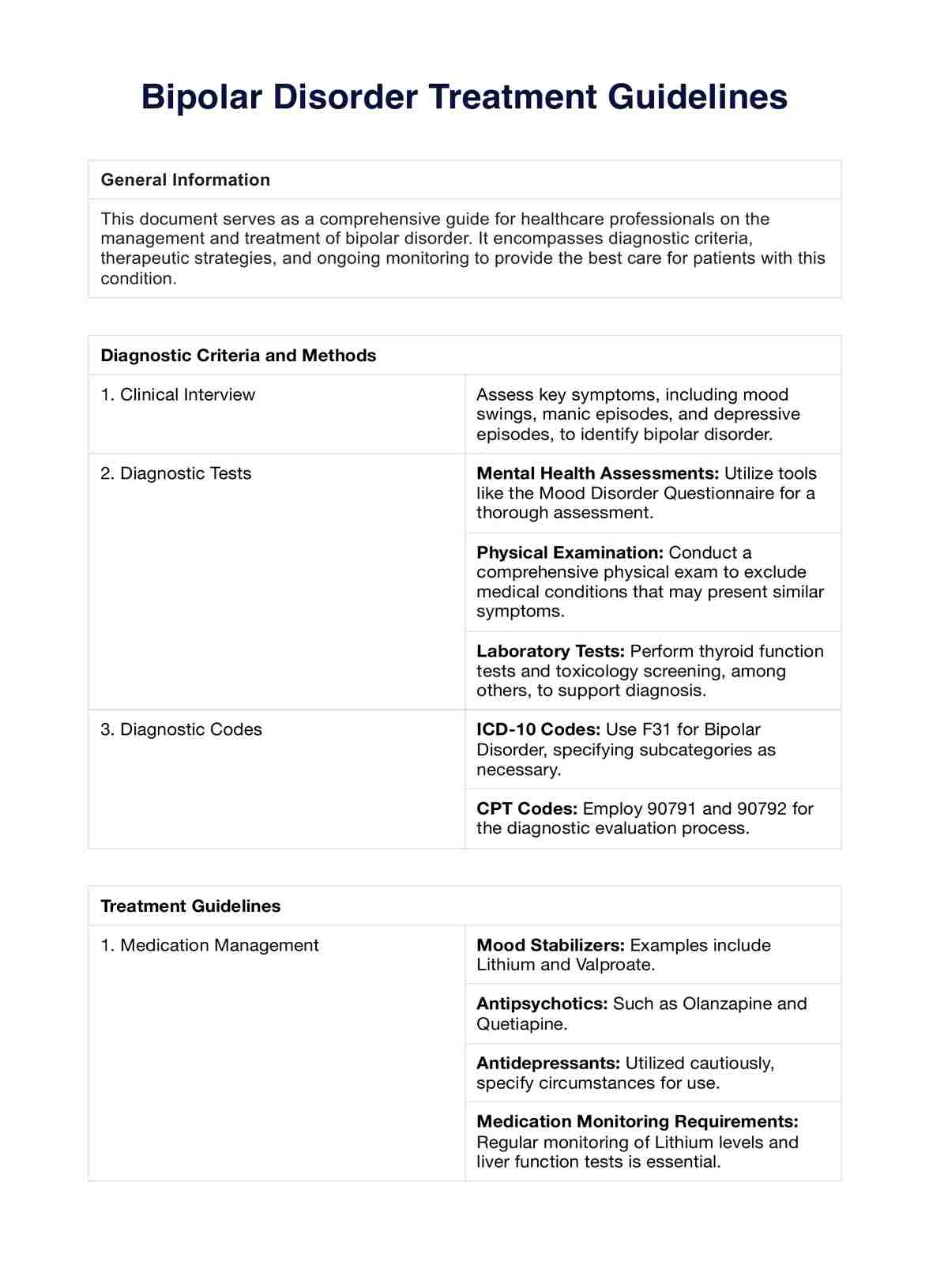
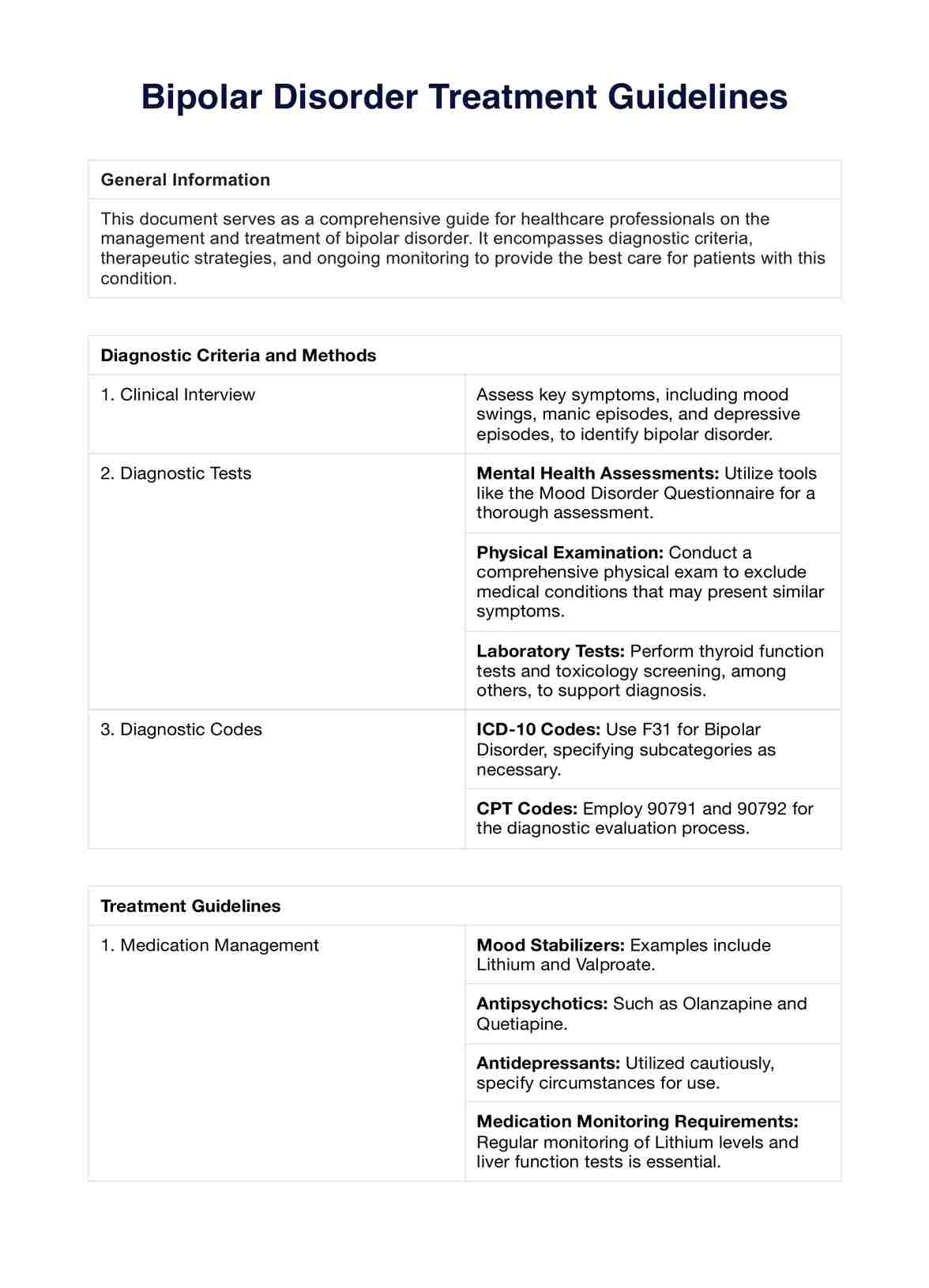

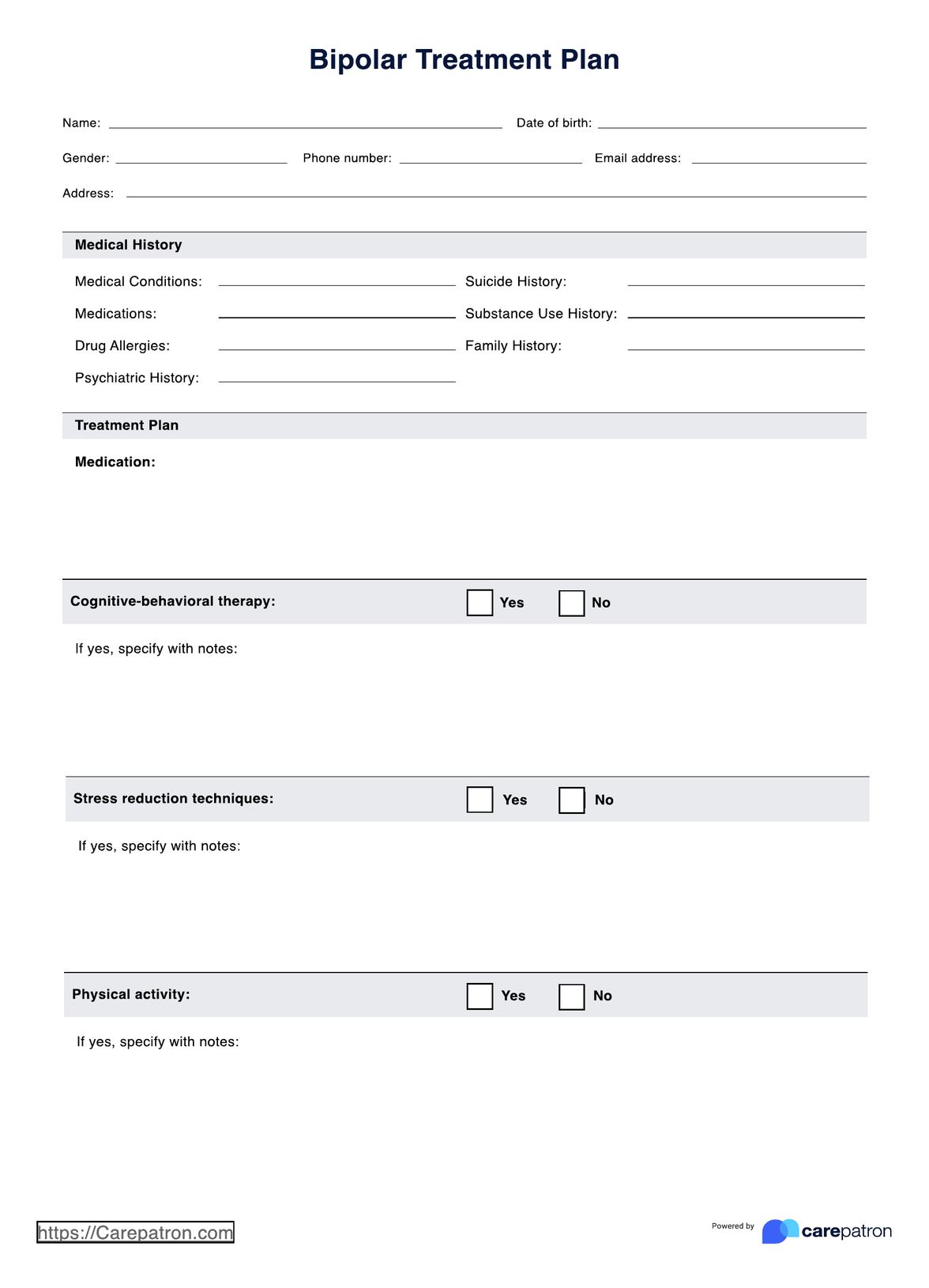
















-template.jpg)


